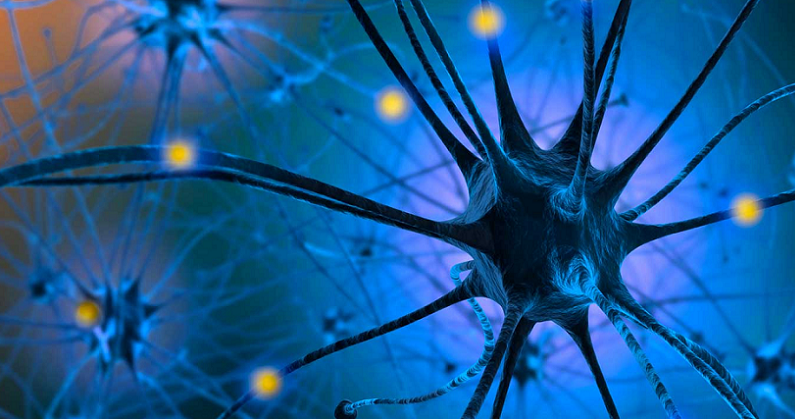
Substance P is a neuropeptide that has garnered significant attention in the realms of brain and cognitive health. Often overlooked yet crucial, Substance P operates at the crossroads of our emotional and cognitive experiences. Substance P is more than just a chemical messenger; it is a key player in the intricate dance of neurotransmitters within our brain. Its role extends beyond mere transmission of signals, influencing our mood, stress responses, learning capabilities, and much more.
Contents
Introduction to Substance P
Substance P is a neuropeptide often overshadowed in discussions about brain health, though it plays a pivotal role in our emotional and cognitive processes.
Explanation of Substance P
Substance P is more than just a term in the lexicon of neurochemistry; it’s a fundamental component of our nervous system. Initially discovered as a factor influencing muscle contractions, it has since been recognized as a key player in the transmission of pain and modulation of emotions in the brain. This peptide is involved in various physiological processes, from inflammation to the regulation of mood. Understanding Substance P is not just about understanding a molecule; it’s about unraveling a critical aspect of human biology that influences our daily lives.
Overview of the Role of Substance P in the Brain
The brain is a complex organ, and Substance P plays a significant role in its intricate functioning. It is not only involved in transmitting pain signals but also in regulating various aspects of our emotional and cognitive landscape. This neuropeptide operates within a sophisticated network of neurons, influencing processes ranging from our response to stress to the way we form memories. The role of Substance P in the brain is multifaceted, making it a subject of great interest in neuroscience and psychology.
Importance of Hormones in Emotional Processing and Cognition
While Substance P is a key focus, it’s important to contextualize it within the broader framework of hormonal influence on brain function. Hormones, often perceived as mere chemical messengers, are in fact crucial regulators of our mental and emotional state. They play a significant role in shaping our mood, cognitive abilities, and overall mental health. By understanding the role of Substance P within this hormonal milieu, we can gain a more comprehensive view of how our brains process emotions and thoughts.
The Nature of Substance P
As we get deeper into our exploration of Substance P, it becomes crucial to understand its fundamental nature, from its chemical essence to how it interacts within the complex neural networks of our brain.
Chemical Structure and Properties of Substance P
Substance P stands out in the realm of neurochemistry due to its unique chemical structure. It is a peptide composed of eleven amino acids, making it relatively small but incredibly potent. This structure is key to its ability to bind to specific receptors in the brain, a critical aspect of its function. The peptide nature of Substance P allows it to cross barriers and interact with various parts of the nervous system, playing diverse roles in neural communication and response mechanisms [1].
Production and Release of Substance P in the Brain
The production and release of Substance P in the brain are as intriguing as its structure. This peptide is synthesized in the neurons, particularly those located in the brainstem and spinal cord, areas crucial for processing pain and emotional responses. Following synthesis, Substance P is stored in vesicles within the nerve cells.
Upon stimulation – be it through stress, pain, or other triggers – it is released into the synaptic cleft where it binds to specific receptors on neighboring neurons, facilitating communication and signal transmission in the brain.
Interaction of Substance P with Neurotransmitters and Receptors
Substance P does not act in isolation. Its role in the brain involves intricate interactions with various neurotransmitters and receptors. Primarily, it binds to the neurokinin-1 (NK1) receptor, a connection pivotal for its role in transmitting pain and modulating emotional responses.
Besides, Substance P can influence the activity of other neurotransmitters like serotonin and dopamine, thereby affecting mood, anxiety, and stress responses. Understanding these interactions is crucial for comprehending the diverse effects of Substance P on emotional processing and cognition [2].

Substance P and Emotional Processing
The intricate relationship between Substance P and emotional processing is a fascinating area of study in neuroscience. Understanding the role of Substance P in emotional processing not only enhances our knowledge of brain chemistry but also provides insights into potential therapeutic approaches for emotional disorders.
Role of Substance P in the Regulation of Mood
Substance P plays a significant role in the regulation of mood. It is intricately involved in the neural pathways that govern our emotional states. Studies have shown that elevated levels of Substance P are associated with heightened emotional responses, while lower levels can lead to a dampened mood. This regulatory effect is crucial for maintaining emotional balance and is especially relevant in understanding conditions like depression and anxiety, where mood regulation is disrupted.
Impact of Substance P on Stress and Anxiety Responses
The impact of Substance P on stress and anxiety is another vital aspect of its function in emotional processing. This peptide is released in response to stress, triggering a cascade of reactions in the brain that contribute to the ‘fight or flight’ response. It heightens the brain’s awareness of stressful stimuli, thereby modulating our anxiety levels. Understanding this response is crucial, as it opens avenues for potential treatments for anxiety disorders, where the regulation of stress responses is paramount [3].
Substance P’s Influence on Depression
Substance P’s influence extends to more severe emotional conditions, such as depression. Research has found that individuals with depression often exhibit altered levels of Substance P. This alteration affects neurotransmitter systems linked to mood, such as serotonin and dopamine.
By influencing these systems, Substance P can exacerbate or alleviate depressive symptoms. This connection between Substance P and depression not only enhances our understanding of the biochemical underpinnings of this mental health condition but also suggests new therapeutic targets.

Substance P in Cognitive Functions
Substance P’s role extends beyond emotional processing; it also plays a crucial part in various cognitive functions. Understanding these aspects is key to comprehending the full spectrum of Substance P’s impact on our mental processes.
Contribution of Substance P to Learning and Memory
One of the fascinating roles of Substance P is its contribution to learning and memory. This neuropeptide is involved in the modulation of synaptic plasticity, the foundation of learning and memory formation in the brain. By influencing how neurons connect and communicate, Substance P can affect the strength of these connections, thereby playing a role in how we encode and retrieve information. This aspect of Substance P is particularly intriguing in the context of neurodegenerative diseases, where learning and memory are compromised.
Effect of Substance P on Attention and Concentration
Substance P also has a significant impact on attention and concentration. It helps regulate the neural circuits involved in sustaining attention and filtering out distractions. This regulation is crucial for cognitive performance and day-to-day functioning. An imbalance in Substance P levels can lead to difficulties in maintaining focus, which is evident in certain cognitive disorders. Understanding this role of Substance P could lead to better management strategies for conditions characterized by attention deficits [4].
Substance P and Neuroplasticity
Finally, the role of Substance P in neuroplasticity is a key area of interest. Neuroplasticity refers to the brain’s ability to reorganize itself by forming new neural connections throughout life. Substance P contributes to this process by influencing neuronal growth and survival.
This aspect is particularly important in the context of brain injury and recovery, as well as in the aging brain. By understanding how Substance P affects neuroplasticity, we can gain insights into potential treatments for enhancing brain repair and adaptation in various neurological conditions.
Clinical Implications of Substance P
The exploration of Substance P extends from the realm of basic science into the crucial area of clinical application. Understanding the role of Substance P in both emotional processing and cognitive functions has significant implications for the treatment of various mental health disorders.
Substance P in Mental Health Disorders
Substance P has a profound impact on several mental health disorders. Its involvement in mood regulation and stress response makes it a potential target in the treatment of conditions such as depression, anxiety, and post-traumatic stress disorder (PTSD).
Elevated levels of Substance P have been observed in patients with these disorders, suggesting its role in the pathophysiology of such conditions. Understanding these relationships opens the door for developing new pharmacological treatments that specifically target Substance P pathways, offering hope for more effective management of these disorders [5].
Therapeutic Targets Involving Substance P
The potential of Substance P as a therapeutic target is an exciting prospect in modern medicine. Given its role in pain transmission, emotional processing, and cognitive functions, targeting Substance P or its receptors could lead to novel treatments for a range of conditions. This includes not only mental health disorders but also chronic pain conditions, where Substance P plays a key role. The development of Substance P antagonists, for instance, is an area of active research, aiming to mitigate the effects of this neuropeptide in various pathological conditions.
Future Research Directions Involving Substance P
The future research directions in the study of Substance P are as promising as they are necessary. Key areas of focus include understanding the precise mechanisms by which Substance P affects the brain and behavior, identifying specific conditions that could benefit from Substance P-targeted therapies, and developing safe and effective drugs that modulate its activity.
Additionally, research into the role of Substance P in neurodegenerative diseases, cognitive decline, and brain injury recovery could significantly advance our understanding and treatment of these challenging conditions.
References
[1] Substance P in the medial amygdala: Emotional stress-sensitive release and modulation of anxiety-related behavior
[2] Substance P: A neuropeptide involved in the psychopathology of anxiety disorders
[3] The detrimental effects of emotional process dysregulation on decision-making
[4] Similar effects of substance P on learning and memory function
[5] The association between substance P and white matter integrity

